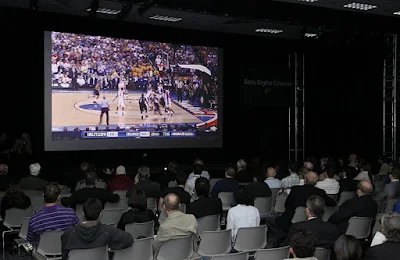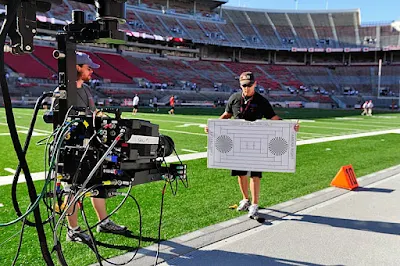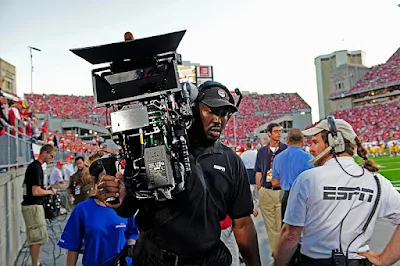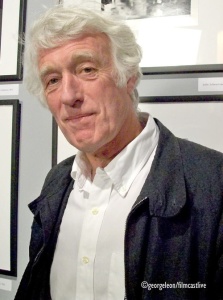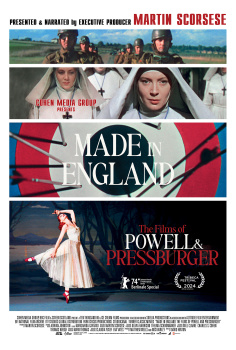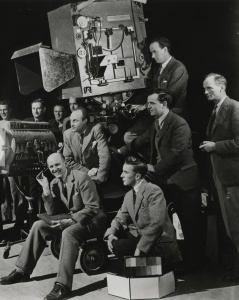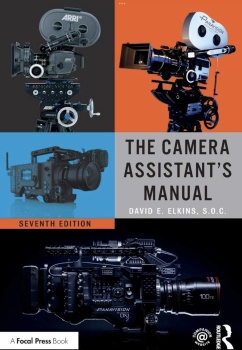by George Leon
ESPN To Launch First 3D Television Network. ESPN presented at the NABShow 2010 Content Theater, the super session ESPN: Scoring a Field Goal in S3D Sports to a pack house audience emphasizing on the creative and technical lessons that ESPN has learned producing sports in stereoscopic 3D -S3D-, how S3D impacts broadcast direction, workflows, graphics, camera placement and other key components of sports capture and exhibition. "The worldwide leader in sports" featured dynamic, never-before-seen S3D sports footage and addressed the network's vision for making a dedicated S3D channel a reality.
The panelists were Anthony Bailey, vice president emerging technologies, ESPN; Phil Orlins, coordinating producer, ESPN X Games; Vince Pace, CEO and Cinematographer, PACE; and Bob Toms, vice president, production enhancements & interactive TV, ESPN.

Earlier this year,
"The industry’s first 3D television network" was announced by
George Bodenheimer, Co-chairman, Disney Media Networks, and President, ESPN and ABC Sports. ESPN 3D will showcase a minimum of 85 live sporting events during its first year, beginning with the first
2010 FIFA World Cup match on June 11 featuring South Africa vs. Mexico. Other events to be produced in 3D include up to
25 2010 FIFA World Cup matches, NBA,
X Games ,
college basketball, and
college football, which will include the BCS National Championship game in Glendale, Ariz., January 10, 2011. Additional events will be announced at a later date.
"ESPN’s commitment to 3D is a win for fans and our business partners,” said Bodenheimer. "ESPN 3D marries great content with new technology to enhance the fan’s viewing experience and puts ESPN at the forefront of the next big advance for TV viewing.”
Sony HDC-1500 cameras, side by side dual lenses
Pace’s Fusion 3D technology
“This will be a meaningful step to drive adoption of 3D television sets and afford opportunities for our affiliates to create value through new product offerings, and our advertisers, who want fresh sponsorship opportunities,” said Sean Bratches, executive vice president, sales and marketing.
ESPN has been testing ESPN 3D for more than two years. Last fall, ESPN produced the USC vs. OSU college football game which was shown in select theaters as well as to 6,000 fans at the Galen Center on USC’s campus. ESPN has developed best practices for utilizing the technology in live game applications which have provided ESPN the ability to streamline workflow operations, adjust 3D camera positioning, test transmission and gauge fan reaction to a 3D telecast versus a traditional telecast.
Fusion calibration charts
ESPN relied on NEP's SS 3D truck, a 53-foot unit that ESPN first used to produce the Ohio State-USC college football game in 3D last September. The truck, which NEP built in partnership with 3D production specialist PACE, features a 3D viewing area where the production team can watch the action on 3D LCD monitors while wearing passive 3D glasses; a "convergence station" where operators can dynamically adjust the depth of field from multiple cameras; and 3D-capable tape, video and engineering rooms.
High Definition 2D and 3D Fusion Pace rigged cameras
covering the game
Key gear includes PACE’s FUSION 3D technology, which relies on stereoscopic camera rigs that use two Sony HDC-1500 cameras. SS3D is wired for eight 3D camera systems and houses a Sony MVS-8000A 4ME switcher, an NVision Envoy digital video router, NVision AES digital audio router, and SSL Aysis Air PLUS! digital audio console. One Chyron Hyper X3 graphics unit is on board, provided by PACE, and the truck is wired for two six-channel EVS XT[2] servers (the tape complement is à la carte, per client request).. SS3D features a 3D production viewing area (monitor wall provided by PACE), a convergence station, and 3D-capable tape, video, and engineering rooms.
3D Master Control and stereographers controlling
intrerocular and convergence
The production team, includes a director for both the 2D and 3D productions-with the exception of a
stereo-grapher dedicated to the 3D pictures, and a separate tape producer who had the freedom to select different shots for the pre-recorded ESPN2 telecast.
Smaller High Definition cameras with
splitter lens for hand held EFP coverage
PACE's Fusion 3D camera system was used to shoot the sci-fi epic 'Avatar' - The film is a revolutionary blend of CG and live-action, all coming together in stunning digital 3D. PACE is the world's leading innovator in advanced 3D and Digital Cinema Systems.
Trusted by many of the top producers in the industry, the team at PACE, in collaboration with Director James Cameron, has designed and developed the FUSION camera system, capable of creating content in some of the planet's most extreme locations. The Pace Fusion 3D digital camera has two lenses side by side; the dual signals from the camera are sent by cable to a remote storage system. The camera's lenses can be positioned a variable distance apart for different shooting circumstances (convergence).
Watch a video clip about the Pace Fusion camera in our ON-DEMAND video playlist above
 Earlier this year, "The industry’s first 3D television network" was announced by George Bodenheimer, Co-chairman, Disney Media Networks, and President, ESPN and ABC Sports. ESPN 3D will showcase a minimum of 85 live sporting events during its first year, beginning with the first 2010 FIFA World Cup match on June 11 featuring South Africa vs. Mexico. Other events to be produced in 3D include up to 25 2010 FIFA World Cup matches, NBA, X Games , college basketball, and college football, which will include the BCS National Championship game in Glendale, Ariz., January 10, 2011. Additional events will be announced at a later date.
Earlier this year, "The industry’s first 3D television network" was announced by George Bodenheimer, Co-chairman, Disney Media Networks, and President, ESPN and ABC Sports. ESPN 3D will showcase a minimum of 85 live sporting events during its first year, beginning with the first 2010 FIFA World Cup match on June 11 featuring South Africa vs. Mexico. Other events to be produced in 3D include up to 25 2010 FIFA World Cup matches, NBA, X Games , college basketball, and college football, which will include the BCS National Championship game in Glendale, Ariz., January 10, 2011. Additional events will be announced at a later date.
